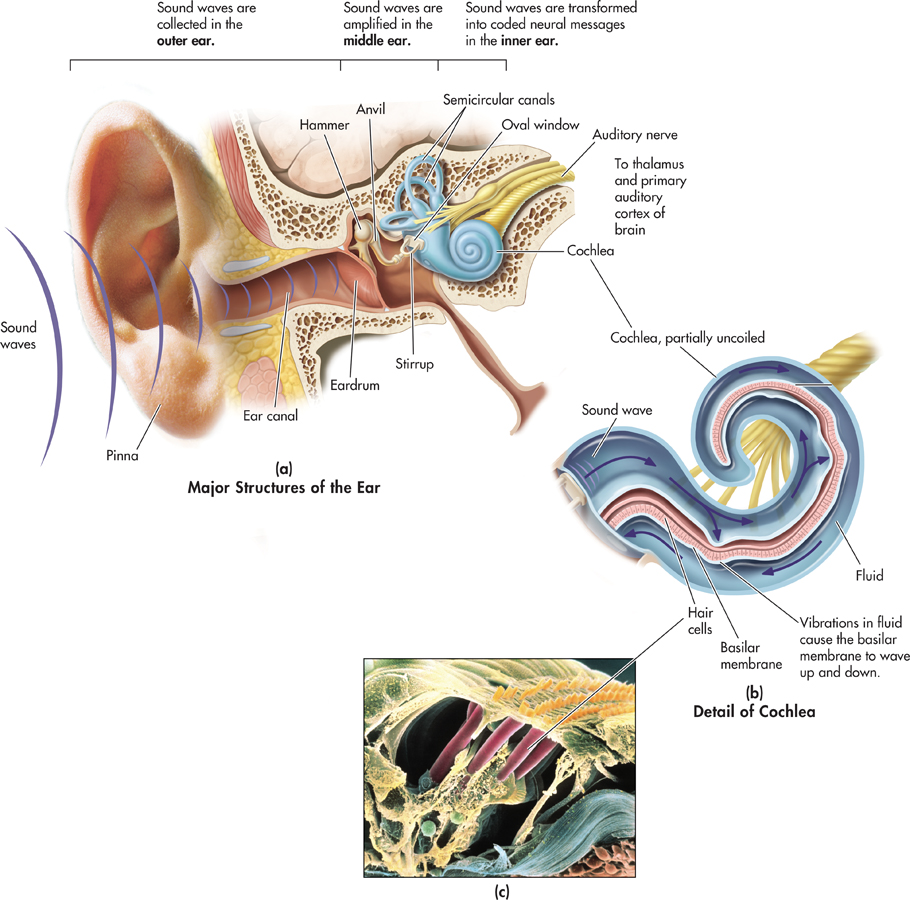
FIGURE 3.8 The Path of Sound Through the Human Ear The path that sound waves take through the major structures of the human ear is shown in (a). After being caught by the outer ear, sound waves are funneled down the ear canal to the eardrum, which transfers the vibrations to the structures of the middle ear. In the middle ear, the vibrations are amplified and transferred in turn to the oval window and on to the fluid-filled cochlea in the inner ear (b). As the fluid in the cochlea vibrates, the basilar membrane ripples, bending the hair cells, which appear as rows of yellow tips in the top right section of the color-enhanced scanning electromicrograph (c). The bending of the hair cells stimulates the auditory nerve, which ultimately transmits the neural messages to the auditory cortex in the brain.